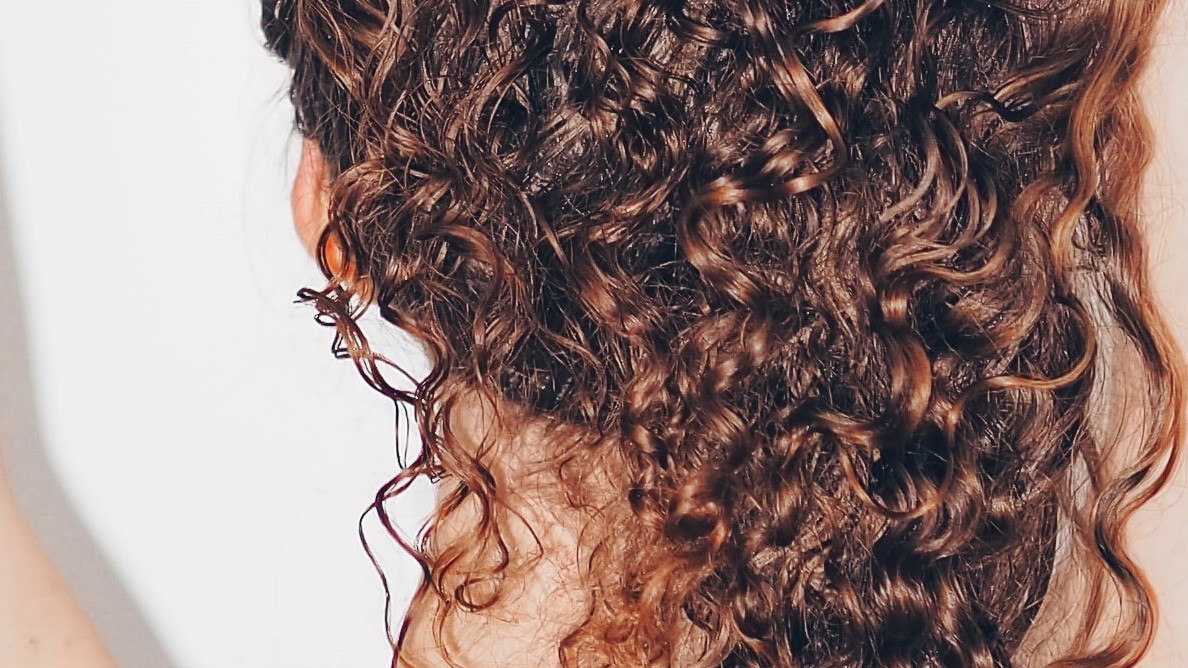Spicy take -- hair schools don't adequately prepare stylists to cut curly, kinky, and coily hair types. Most stylists are taught to cut these hair types the same way that they cut straight hair -- wet it and cut as-is. And sure, this works just fine for straight and wavy-ish hair, but it just doesn't make the cut (hah!) for curls.
So what's the alternative? There's Lorraine Massey's Deva Cut, an approach in which curls are cut dry, rather than wet in order to bring out volume and bounce. But for some people, volume isn't the ultimate goal. Some curlies are more interested in definition and frizz reduction rather than bounce and flounce.
So enter the Ouidad cut. Ouidad trained stylists "carve and slice" curly hair to enhance the curl pattern, and minimize frizz and unmanageability. Sounds good, no?
Brooke Shaw, Editor-In-Chief of HairstyleOnPoint.com, filled us in on some of the finer details of the Ouidad cut. And speaking of fine details: Brook says "the Ouidad cut is best for thick, voluminous curly hair as it makes curls firmer, more dynamic, and more manageable." But though this cut is primarily designed for those with bulky curly hair, it can be achieved on all curl types from loose to kinky. So as long as your hair is thick and you want more manageability in your curls or kinks, you're in business.
What especially sets the Ouidad cut apart from the Deva cut is that Ouidad focuses on lessening curl volume along with minimizing frizz. Ghanima Abdullah from
TheRightHairstyles.com shares, "those who opt for Ouidad will have hair that is relatively tame, as compared to the big hair of their Deva cut rivals. The curls also come out very defined."
Another big difference from the Deva cut: the Ouidad cut involves hair being trimmed while wet. But this is still anything but your basic wet haircut. Besides the "carve and slice" technique, Brooke says that to reveal the curl's natural pattern, stylists use the "rake and shake" method, and special blow drying techniques to finish off the look. These methods allow the stylist to best recognize how the hair will look when it's dry, while still benefiting from the helpful parts of cutting wet hair. Ghanima says, "Ouidad does the cut on wet hair and gets great results that way, even though curls can be unpredictable before drying fully. Ouidad slices through the curls on a slant, creating layers and definition while debulking the hair. The resulting curls cascade into one another in a unique manner." Heck, sign us up.
Stylists who provide the Ouidad cut partially get good results because they first perform a very thorough curl assessment. Clients aren't just asked what they want their hair to look like after the cut, they're also asked what they like about their hair generally, what they don't like, what their routine looks like, and what they'd like to change about their hair in general. The stylist will also spend some time just touching the hair and getting to know its texture and curl before hitting the sink.
Leah Williams, hairstylist and founder of LuckyCurl.com, says that all these steps are essential to "provide the best possible results" in helping the client achieve what she's looking for. Which is definitely a good thing because spoiler alert: getting an Ouidad cut can be a little bit scary. When the scissors come out, curls are sometimes slices midway through the strand. Leah says that this eliminates "the triangle look you often see with layering," but it can also cause significant client alarm. And that's totally understandable -- no one wants to worry that their stylist is secretly giving them a mullet.
But though the process can be a little anxiety invoking (you're cutting my hair WHERE?) the results are striking. There's a good reason that the Ouidad trained stylist makes the cuts where she does: her goal is to make the curls fit together like a puzzle, rather than falling all over one another into poofy triangle form. The end result is well-defined ringlets that cascade naturally.
So... all things considered, should you get an Ouidad cut? Or should you seek out a stylist who specializes in another curl style?
It depends on what you're looking for. Ouidad cuts are known for the exciting shapes that they create, as well as their ability to increase manageability and definition. This is a kind of cut that creates shelves of curls -- it's an unorthodox method that leads to fabulous results. Plus, they're especially fantastic for people who want to debulk their heavy curls -- bye-bye weight, hello fabulous.
The cons? Some stylists argue that Ouidad cuts don't grow out as well as, say, a Deva cut, so the ability to at least semi-regularly see your stylist is important. And if you're super, super nervous in the salon chair, this may not be the style for you. Finally, a word of caution to anyone who's just looking for a trim, because that's not what this haircut entails. Ouidad stylists cut curls differently than basically anyone else in the curl world, so be prepared to lose a bit of length.
Wanna learn even more about haircare? Here's what you should check out next:
pH Balanced Shampoo: Everything You Need To Know
The heck does "pH balanced" even mean???
How To Grow High Porosity Hair
Buh-bye, breakage.
How Long Should I Wait To Dye My Hair Again?
**glances at clock**
What Is A Hair Cuticle?
Let's learn more about your hair's first line of defense against damage. ⚔️
Hair Texture Changes 101
The good, the bad, and the ugly ... when it comes to hair texture changes, we've got you covered.


